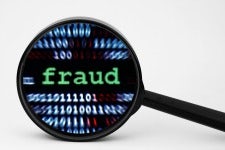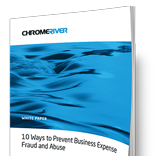
What if someone told you that about 5 percent of your organization’s revenue was being lost to fraud? It’s worth considering, because that’s the average loss for an organization, according to the Association of Certified Fraud Examiners. Most of that revenue slips away through fraudulent expense claims, payments and procurement.
CFO.com identifies several key areas to watch for employee fraud, and suggests practices and methods that can help contain these losses.
- Using corporate credit cards for personal charges. If your organization uses a corporate credit card program, some employees may see the card as an opportunity to expense personal items or make unauthorized travel and entertainment purchases. Corporate cards leave an electronic trail that can help with uncovering these abuses, but fraudulent charges may go unnoticed if the transaction data isn’t analyzed regularly.
For larger organizations especially, having an individual review each charge probably isn’t cost-effective (or even possible). By integrating the cards with expense management software, the system can automatically flag suspicious charges for further review. Examples could include unusual merchant codes; charges made while an employee is on vacation; and unusually high charges for standard items, such as hotel rooms. - Creating purchase orders to generate kickbacks. Employees may create purchase orders to buy items for personal use, or even set up a phantom vendor account in order to process direct payments to them. Here, too, organizations can use automation to help identify suspicious activity. For example, AP automation can be used to see if the same employee both entered and approved a purchase order, allowing the organization to then freeze the transaction pending a review.
- Adding phantom employees or excessive overtime to payroll records. On the more extreme end, payroll fraud can include adding fake employees to payroll systems, or keeping individuals on the payroll after they’ve left the organization. It might be easy to discount such blatant fraud within your organization, but what about employees entering excessive overtime hours? How long would it take for you to catch this fraud with your existing system?
In addition to these three areas, CFO.com also lists data theft and padding sales numbers to gain commissions as common problems.
Without the tools to monitor employee expense claims and other transactions, you’ll never know how much revenue your organization loses to fraud, but chances are it is significant. Implementing an electronic expense report program is a cost-effective way to limit these losses, so that the solution doesn’t end up costing more than the problem.
We’d like to hear from you. Will you share any examples of employee fraud you’ve encountered? What alerted you to the problem? Share your experiences in the comments section!
Search
Subscribe
Latest Posts
- The Future of Finance: 5 Predictions For Digital Transformation in 2022 And Beyond
- Worried About Business Fraud? Use This B2B Pandemic Payment Fraud Checklist
- 5 Reasons Why Finance & Procurement Work Better Together
- Measure What You Manage: How to Make The Case for AP Automation With ROI To Your CEO
- A Brave New World: 3 Ways for Finance Teams to Navigate the Post- Pandemic Landscape
Posts by Category
Our choice of Chrome River EXPENSE was made in part due to the very user-friendly interface, easy configurability, and the clear commitment to impactful customer service – all aspects in which Chrome River was the clear winner. While Chrome River is not as large as some of the other vendors we considered, we found that to be a benefit and our due diligence showed that it could support us as well as any large players in the space, along with a personalized level of customer care.
We are excited to be able to enforce much more stringent compliance to our expense guidelines and significantly enhance our expense reporting and analytics. By automating these processes, we will be able to free up AP time formerly spent on manual administrative tasks, and enhance the role by being much more strategic.
